How To Turn On Control Points In Rhino
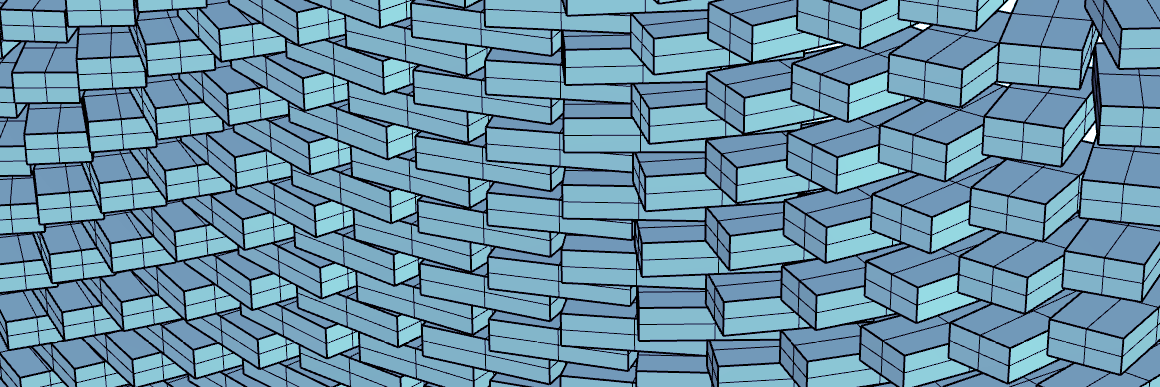
Rhino Basics
- Introduction
- Interface
- Helpers
- Geometry editing
- Point editing
- Solid modeling
- Surfaces
« Dorsum to main
Introduction
Training guide for Rhino 6 or later.
Rhinoceros, is a 3D CAD modeling software package that enables yous to accurately model your designs ready for rendering, animation, drafting, engineering science, analysis, and manufacturing. Rhinoceros is a free-form NURBS surface modeler.
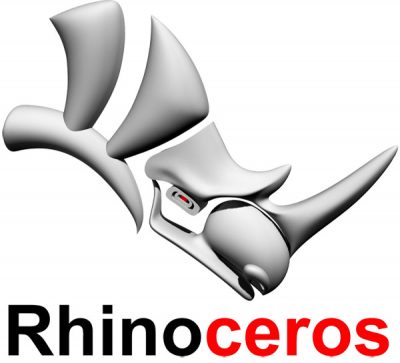
« Back to index
Interface
Rhino divides its screen into different areas:

| Title | Description |
|---|---|
| ane. Window / Title bar | Displays the current model'south file proper noun and file size. |
| 2. Card bar | Groups Rhino commands by function. |
| iii. Command history window | Displays the previous commands. |
| 4. Command prompt | Utilise the Command line to type commands, click control options, type coordinates, type distances, angles, or radii, type shortcuts, and view command prompts. |
| 5. Tabbed Toolbar | Incorporate graphical icons for initiating commands. |
| vi. Viewports | Displays the Rhino working environment including object display, viewport title, groundwork, structure plane filigree, world axis icon. |
| 7. Osnap Toolbar | Contains persistent object snap toggles. |
| eight. Panels | Many Rhinoceros controls are independent in tabbed panels. The panels are docked to the right side of the Rhino screen by default. |
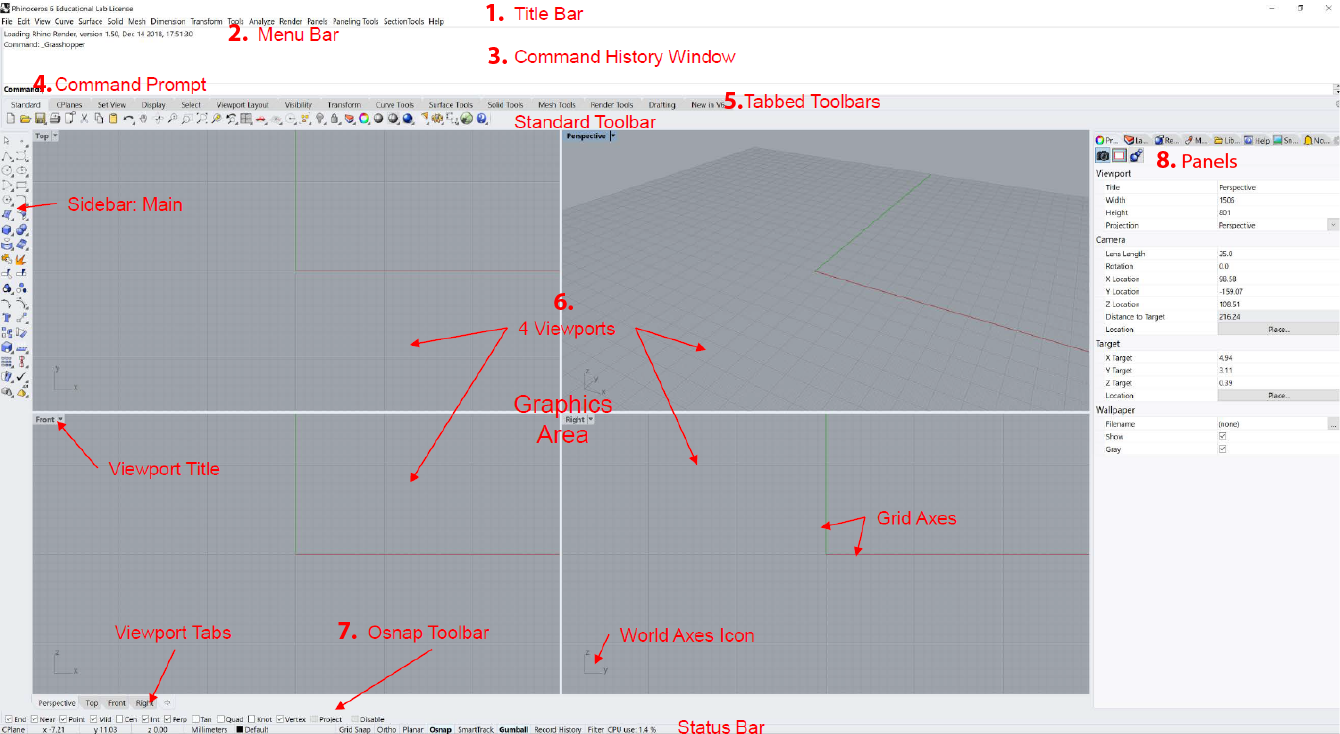
Viewport navigation
| Action | Fundamental |
|---|---|
| orbit | Right button |
| pan | Right push button + shift |
| zoom | Scroll |
| select | Left push |
| select exclusive | Left button elevate correct |
| select inclusive | Left button drag left |
| forcefulness orthogonal | Press + concord shift |
| lock management | Press tab |
« Back to alphabetize
Helpers
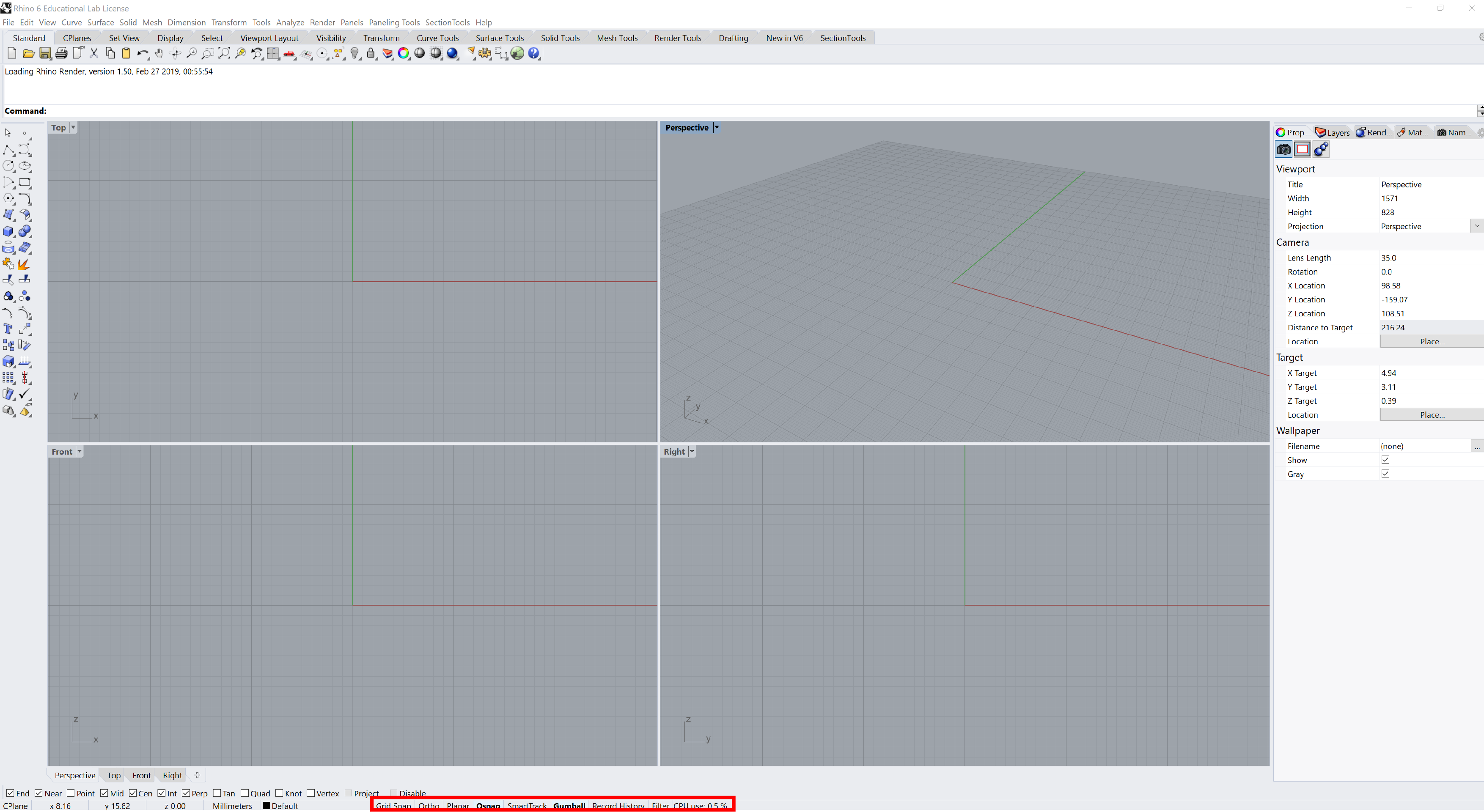
Modeling Aids
| Helper | Description |
|---|---|
| Grid Snap | Snap to grid intersections |
| Ortho | Constrains the marker movement to the points at a specified angle from the last point created |
| Planar | This helps you model planar objects by constraining the input to be on a plane parallel to the construction plane |
| Osnap | Object snaps constrain the marker to an exact location on an object |
| SmartTrack | Temporary reference lines and points that are drawn in the Rhino viewport |
| Gumball | Display widget, on a selected object, facilitating move, scale, and rotate transformations |
| Record History | Records history and updates history-aware objects |
| Filter | Restricts whatsoever selection manner to specified object types |
Layers
By creating objects on different layers, you can edit and view related portions of a model separately or every bit a blended.
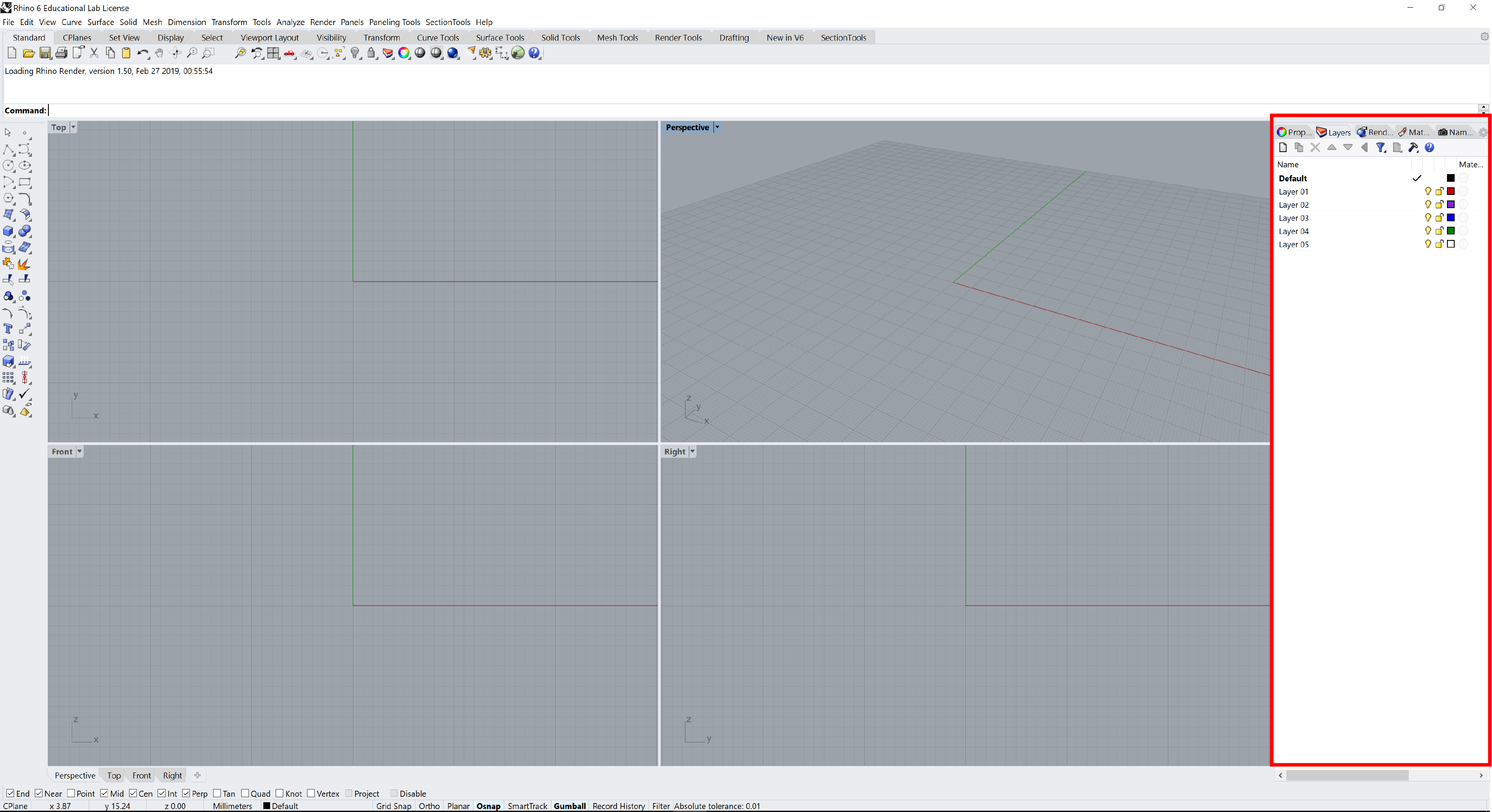
« Dorsum to index
Geometry editing
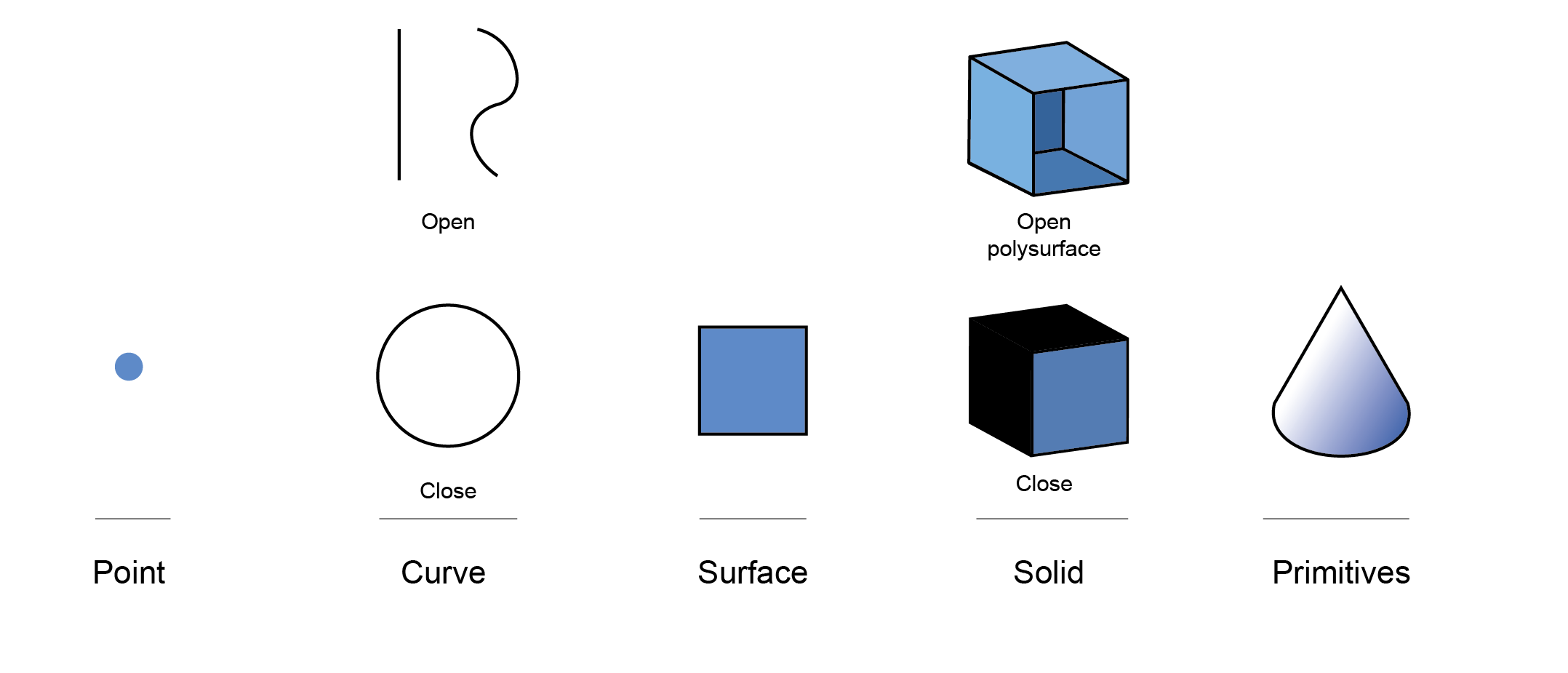
Operations
| Commands | Clarification |
|---|---|
| Move | Motion objects without changing orientation or size. (Transform/ Motility) |
| Copy | Duplicates selected objects and places them in a new location. (Transform/ Copy) |
| Rotate | Move objects in a circular motion around a base bespeak. (Transform/ Rotate) |
| Mirror | Creates a re-create of the objects flipped over a specified centrality on the construction plane. (Transform/ Mirror) |
| Grouping | Grouping objects allows all members of the grouping to exist selected every bit 1. (Edit/Groups/ Group) |
| Trim | Cuts and deletes portions of an object to make it terminate precisely at its intersection with some other object. (Edit/ Trim) |
| Split | Divides objects into parts using other objects as cutters. (Edit/ Split) |
| Extend | Lengthens an object to arrive end precisely at its intersection with some other object or you lot can lengthen an object when there is no intersection. (Curve/ Extend Curve/ Extend Curve) |
| Starting time curve | Creates an object parallel or concentric to another object. (Curve/ Get-go/ Offset Curve) |
| Offset surface | Creates an object parallel or concentric to another object. (Surface/ Commencement Surface) |
| Array | Make multiple copies of selected objects. (Transform/ Array) |
| Loft | Fits a surface through selected contour curves that define the surface shape. (Surface/ Loft) |
| Fillet | Connects two lines, arcs, circles, or curves extending or trimming them to touch or to join with a circular arc. (Bend/ Fillet Bend) |
| Chamfer | Connects two curves by extending or trimming them to intersect or to join with a beveled line. (Bend/ Chamfer Curve) |
| Etc… |
« Back to index
Point editing
You lot tin display the command points or the edit points of an object then that you can adjust the shape of an object, rather than manipulating the whole object at once.
(Edit/Control Points/ Control Points ON)
F10
Command points determine the shape of a curve. Typically, each bespeak of the curve is computed by taking a weighted sum of a number of control points.
Calculation more control points allows better approximation to a given curve, although only a certain grade of curves can be represented exactly with a finite number of control points.
Control points practise non have to be on the curve or surface.
Curve Command Points
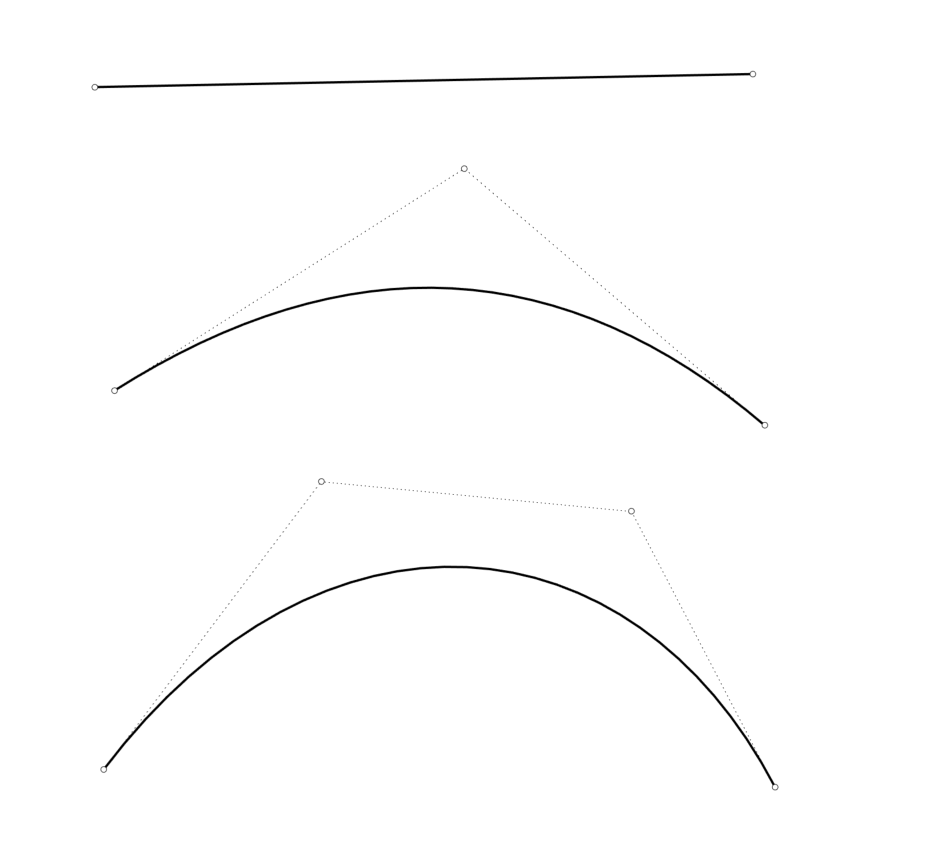
Surface Control Points

(more info: http://docs.mcneel.com/)
Edit points
You lot can utilize signal editing on meshes, curves, and surfaces, merely non on polysurfaces or solids. Rhino'due south curves are represented internally with non-compatible rational B-splines(NURBS). Iii things determine the shape of a NURBS curve:
- A list of points called control points
- Degree
- A list of numbers called knots If you change whatsoever of these things, information technology changes the shape of the curve.
Edit points are always on the curve.
Knots
Part of the information needed to ascertain a NURBS curve is a list of numbers called a knot vector and the values of the numbers in this list are called knots.
Knots are parameters (that is, numbers, not points).
(info: http://docs.mcneel.com/)
« Back to alphabetize
Solid Modelling
Solids are closed surfaces or polysurfaces that enclose a book.
Some of the solid primitives are closed single-surfaces, others are polysurfaces.
Polysurface objects are deformable by using the deformation commands.
You tin as well extract surfaces and deform the surfaces with control bespeak editing.
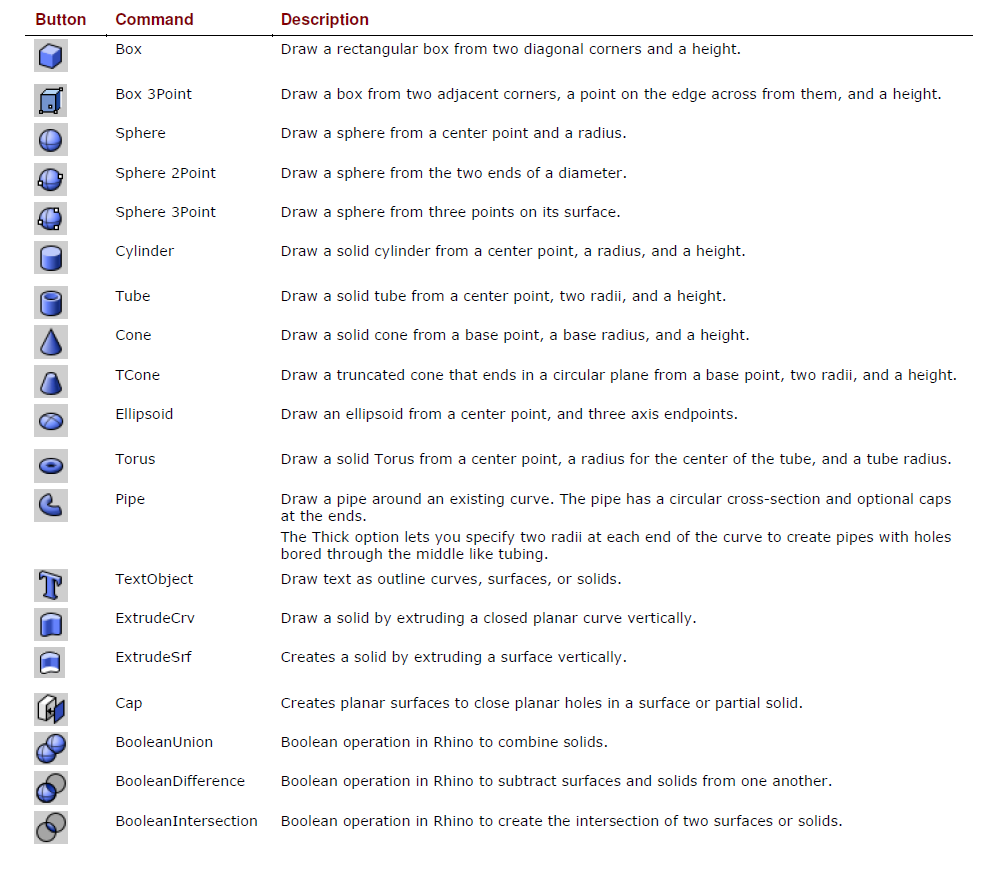
« Back to index
Surfaces
Surfaces are bounded past curves chosen edges.
Surfaces have an area, their shape tin can be changed by moving control points, and they tin can be meshed.
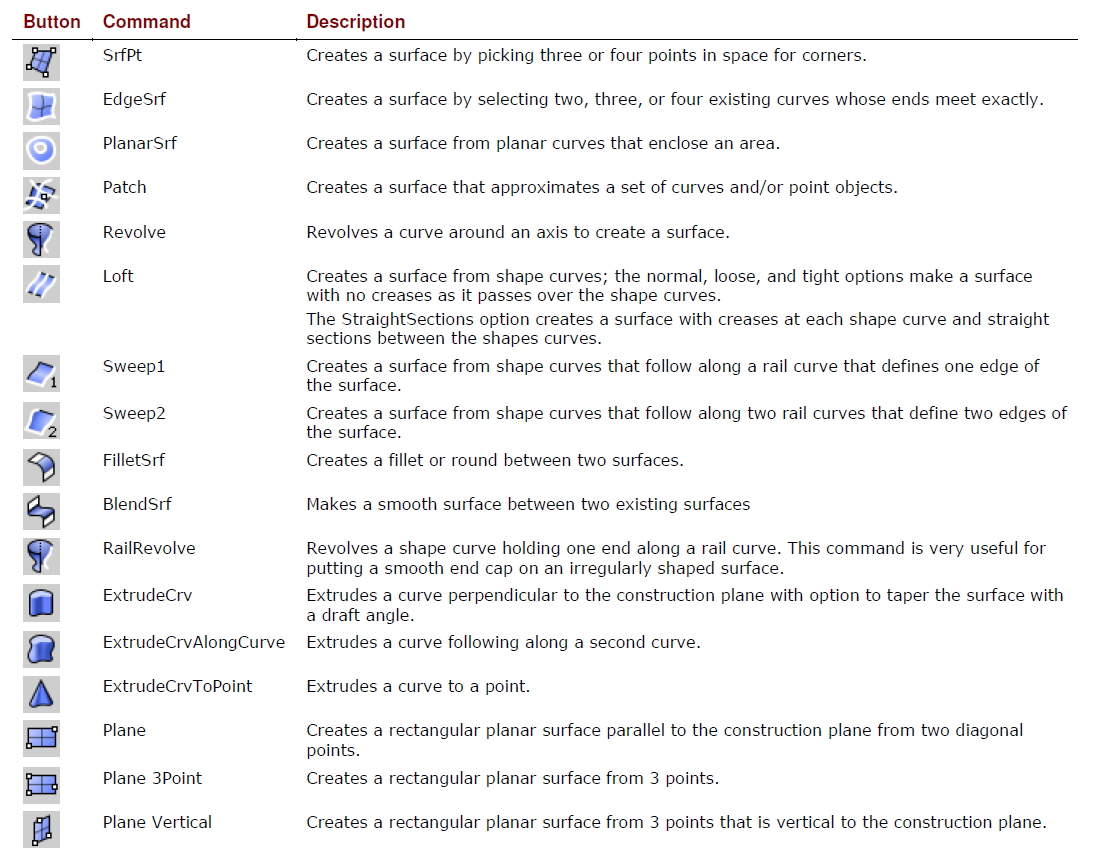
« Back to index
How To Turn On Control Points In Rhino,
Source: https://gramaziokohler.github.io/teaching_materials/rhino/
Posted by: becerrasude1962.blogspot.com


0 Response to "How To Turn On Control Points In Rhino"
Post a Comment